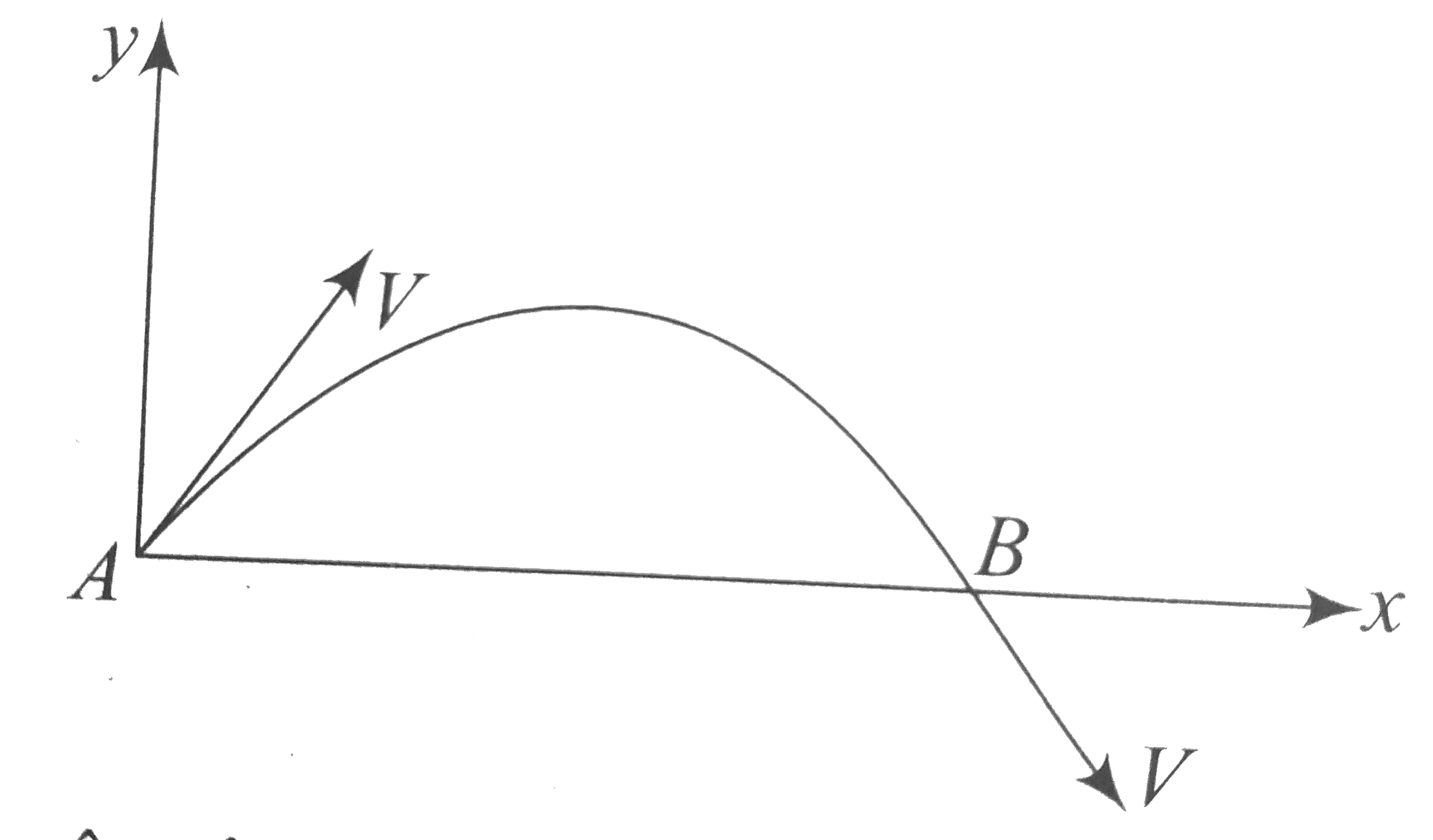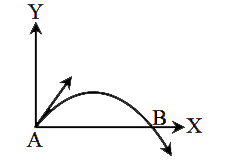A particle of mass 2 kg located at the position (ˆi+ˆj) m has a velocity 2 (+ˆi−ˆj+ˆK)m/s. Its angular momentum about z-axis in (kg−m2/s) is
zero
10
4√3
4√6
The correct Answer is:D
→L=→r×m→V=2×2∣∣ ∣ ∣∣ˆiˆjˆk1101−11∣∣ ∣ ∣∣=4(ˆi−ˆj−2ˆk)⇒∣∣→L∣∣=4√6kgm2/s
Topper's Solved these Questions
- ROTATIONAL MOTION BOOK - VMC MODULES ENGLISHCHAPTER - ROTATIONAL MOTION EXERCISE - LEVEL - 1 (Mixed topics)
15 Videos
- ROTATIONAL MOTION BOOK - VMC MODULES ENGLISHCHAPTER - ROTATIONAL MOTION EXERCISE - LEVEL - 1 (Mixed Numerical Questions)
15 Videos
- ROTATIONAL MOTION BOOK - VMC MODULES ENGLISHCHAPTER - ROTATIONAL MOTION EXERCISE - LEVEL - 1
45 Videos
- REVISION TEST-2 JEEBOOK - VMC MODULES ENGLISHCHAPTER - REVISION TEST-2 JEEEXERCISE - PHYSICS
25 Videos
- SIMPLE HARMONIC MOTION BOOK - VMC MODULES ENGLISHCHAPTER - SIMPLE HARMONIC MOTION EXERCISE - 7-previous year question
46 Videos
Similar Questions
Knowledge Check
Two particles of masses 1 kg and 3 kg have position vectors 2ˆi+3ˆj+4ˆkand−2ˆi+3ˆj−4ˆk respectively. The centre of mass has a position vector
Aˆi+3ˆj−2ˆkB−ˆi−3ˆj−2ˆkC−ˆi+3ˆj+2ˆkD−ˆi+3ˆj−2ˆk
A block of mass 2 kg is moving with a velocity of 2ˆi−ˆj+3ˆk m/s. Find the magnitude and direction of momentum of the block with the x-axis.
View SolutionA uniform force of (3ˆi+ˆj) N acts on a particle of mass 2kg. Hence, the particle is displaced from position (2ˆi+ˆk)m to position (4ˆi+3ˆj−ˆk)m. The work done by the force on the particle is
View SolutionThe velocity of a projectile at the initial point A is (2ˆi+3ˆj)m/s. Its velocity (in m/s) at point B is

View SolutionA particle is located at (3m , 4m) and moving with v=(4ˆi−3ˆj)m/s. Find its angular velocity about origin at this instant.
View SolutionThe velocity of a projectile at the initial point A is (2ˆi+3ˆj)ms. It's velocity (in m/s) at point B is -

View Solution
A rod of mass 2 kg ad length 2 m is rotating about its one end O with an angular velocity ω=4rad/s. Find angular momentum of the rod about the axis rotation.
View SolutionIf for some particle its position vector and linear momentum are respectively be 2ˆi+ˆj+ˆk and 2ˆi−3ˆj+ˆk. Its angular momentum will be:
View Solution
